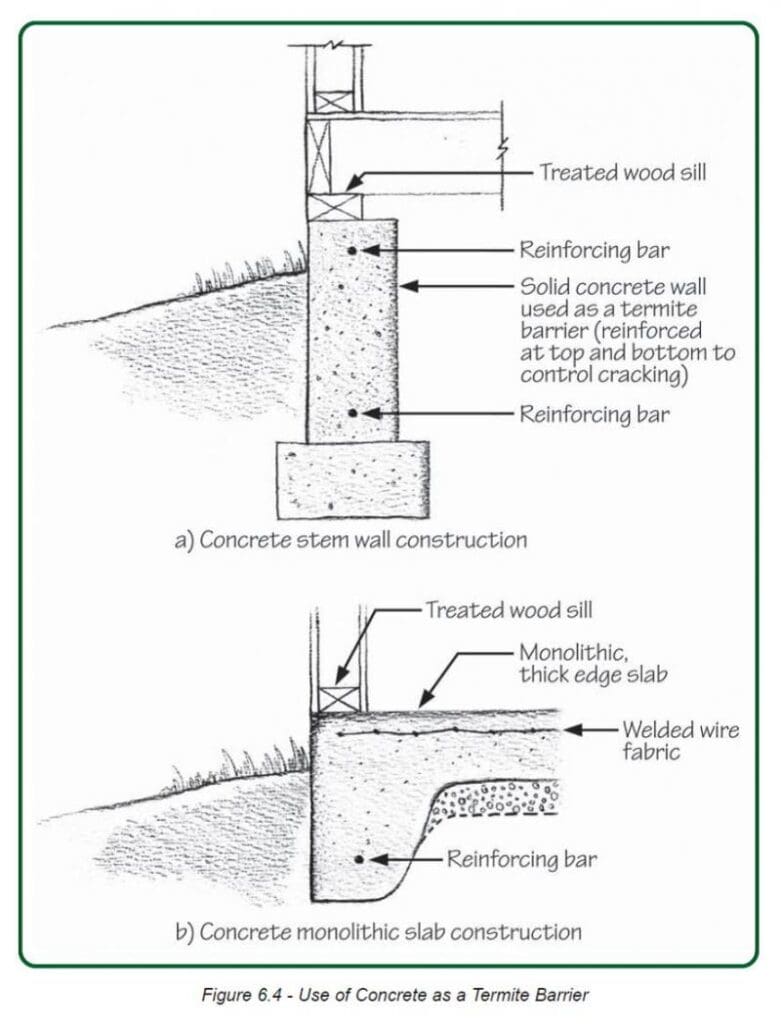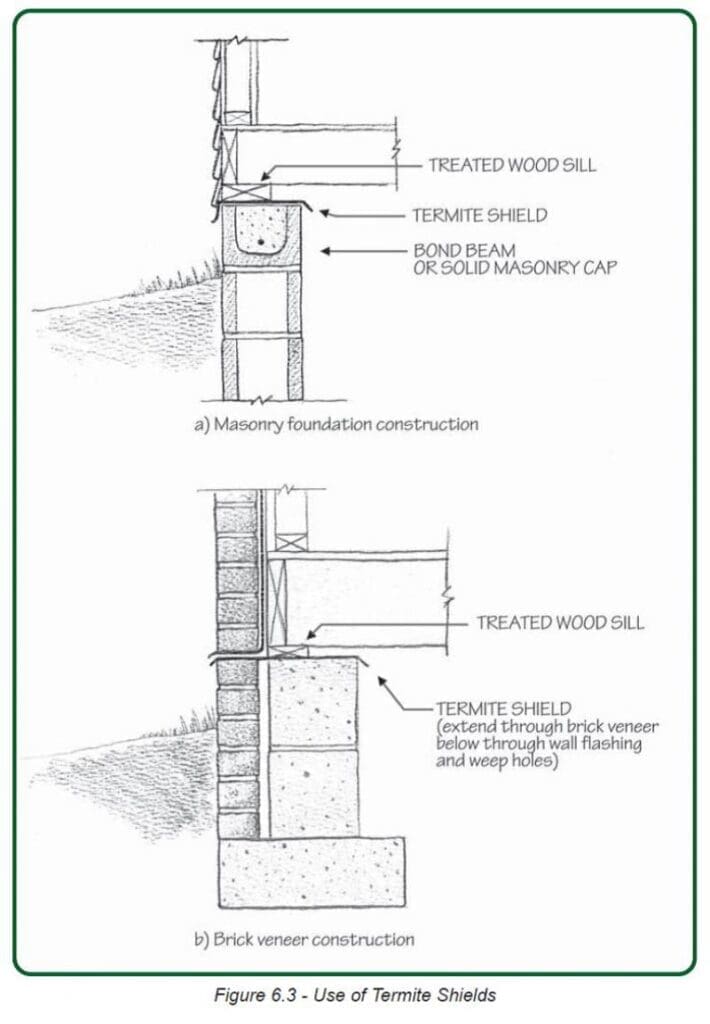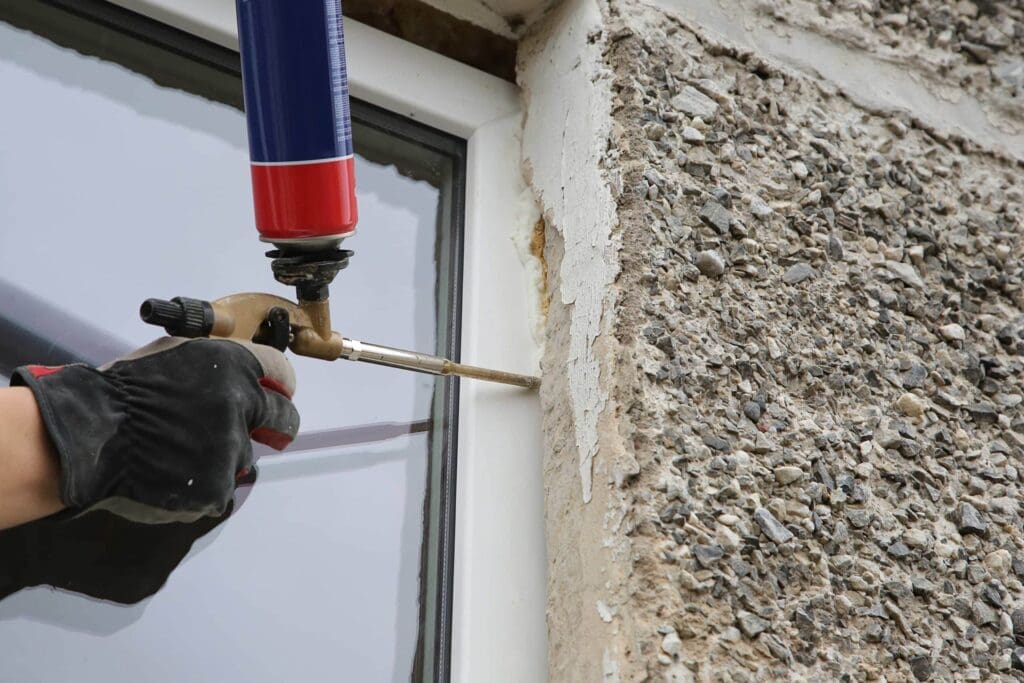In “Cracks & Decaying Masonry: How to prevent pest access,” you’ll discover valuable information on how to keep those unwanted critters from making their way into your home. This informative article explores the relationship between cracks in your home’s masonry and the potential entry points they provide for pests. By understanding the signs of decaying masonry and implementing effective prevention strategies, you can safeguard your home against pests and create a pest-free haven for yourself and your loved ones. So, let’s dive right in and learn how to protect your home from these uninvited guests!

1. Importance of Preventing Pest Access
1.1 Understanding the Importance
When it comes to pest control, prevention is key. By taking proactive measures to prevent pest access, you can avoid the headaches and potential damage that come with an infestation. Pest prevention not only protects your property but also ensures the health and safety of you and your loved ones. By understanding the importance of preventing pest access, you are taking the first step towards maintaining a pest-free environment.
1.2 The Role of Cracks and Decaying Masonry
Cracks and decaying masonry play a significant role in providing pests with easy access to your property. These structural weaknesses create entry points for pests, allowing them to infiltrate your living spaces. Whether it’s tiny cracks in the foundation or gaps in decaying walls, pests can exploit these vulnerabilities to gain entry. As homeowners, it is crucial to address these issues promptly to prevent pest infestations.
1.3 Impact of Pest Infestations on Property
Pest infestations can wreak havoc on your property in multiple ways. From causing structural damage to spreading diseases, pests pose a threat to the integrity of your home and the well-being of its occupants. Termites, for example, are notorious for feasting on wooden structures, which can weaken the foundation of your home over time. Rodents, on the other hand, chew on electrical wires, leading to potential fire hazards. By preventing pest access through cracks and decaying masonry, you can safeguard your property from these costly and dangerous consequences.
2. Identifying Cracks and Decaying Masonry
2.1 Common Signs of Cracks and Decaying Masonry
To effectively prevent pest access, it is crucial to identify cracks and decaying masonry within your property. Some common signs of these structural weaknesses include:
- Visible cracks in walls, floors, or foundation
- Loose or crumbling bricks or stones
- Leaking or water infiltration through walls or ceilings
- Bulging or uneven exterior walls
- Signs of mold or mildew growth
By actively looking out for these signs, you can identify areas that may serve as entry points for pests and take appropriate measures to address them.
2.2 Inspection Techniques
Performing regular inspections of your property is essential in preventing pest access. Start by systematically inspecting the exterior of your home, carefully examining the foundation, walls, and entry points such as windows and doors. Look for signs of cracks, gaps, or deteriorating masonry. In addition to the exterior, pay attention to the interior as well, especially in basements, attics, and crawl spaces. Consider using a flashlight and a mirror to navigate hard-to-reach areas during your inspection. If you notice any potential issues, it is recommended to consult a professional to assess and address them effectively.
3. Types of Pests Attracted to Cracks and Decaying Masonry
3.1 Structural Pest Infestations
Structural pests are those that directly impact the integrity of your property. They include termites, carpenter ants, and wood-boring beetles. These pests are often attracted to cracks and decaying masonry as they provide a readily accessible source of food and shelter. They can cause significant damage to wooden structures and compromise the stability of your home. Identifying and preventing their access through proper masonry repairs is crucial in protecting your property from their destructive abilities.
3.2 Nuisance Pest Infestations
Nuisance pests, such as cockroaches, ants, spiders, and rodents, are attracted to cracks and decaying masonry for different reasons. These pests seek out shelter, food, and water sources in your home. Cracks and deteriorating masonry create the perfect conditions for them to thrive, providing hiding spots and pathways to infest your living spaces. While they may not directly damage the structure of your property, they can pose health risks and create unsanitary living conditions. Preventing their access through effective pest control measures is essential for maintaining a clean and comfortable home.
4. Understanding Pest Behavior
4.1 How Pests Utilize Cracks and Decaying Masonry
Pests are resourceful creatures that have adapted to take advantage of various entry points into your home. Cracks and decaying masonry offer them an easy way in. For example, termites can squeeze through tiny cracks in the foundation or deteriorating wooden structures, while rodents can exploit gaps in exterior walls or loose bricks to access your living spaces. Understanding how pests utilize these vulnerabilities is crucial in implementing the right preventative measures to keep them out.
4.2 Factors Attracting Pests
Besides cracks and decaying masonry, pests are attracted to certain environmental factors that make your property more hospitable to them. These factors include:
- Moisture: Excessive moisture caused by leaks or poor drainage can attract pests like mold, termites, and cockroaches.
- Food and Waste Sources: Pests are drawn to accessible food and waste sources. Ensure proper storage and disposal of garbage, as well as sealing food containers tightly.
- Clutter: Pests find cluttered areas appealing as they provide hiding spots. Regularly decluttering and organizing your property can help prevent pest infestations.
- Vegetation: Overgrown vegetation near the perimeter of your property can create shelters and pathways for pests. Maintaining proper landscaping practices, such as trimming tree branches and shrubs, can help deter pests.
By addressing these factors in conjunction with repairing cracks and decaying masonry, you can significantly reduce the chances of pest infestations.

5. Preventing Pest Access through Masonry Repairs
5.1 Assessing the Severity of Cracks and Decaying Masonry
Once you have identified cracks and decaying masonry, it is important to assess their severity to determine the appropriate course of action. Minor cracks can often be repaired with DIY methods, while more extensive damage may require professional assistance. Assess the size, location, and potential impact of the cracks and decay to make an informed decision on the necessary repairs.
5.2 DIY vs Professional Masonry Repairs
For minor cracks and decay, DIY repairs can be a cost-effective option. There are various products available, such as concrete patching compounds and sealants, that can help fill and seal small cracks. However, it is important to follow the manufacturer’s instructions and ensure proper surface preparation for optimal results. In cases where the damage is extensive or if you are unsure of your DIY skills, it is advisable to seek professional help. Masonry contractors have the expertise and specialized tools to assess and repair cracks and decaying masonry effectively.
5.3 Repair Methods and Materials
The repair methods and materials used for masonry repairs will depend on the specific issues identified. Some common repair methods include:
- Tuckpointing: This involves removing the deteriorated mortar from between bricks or stones and replacing it with fresh mortar.
- Epoxy Injection: Used for structural cracks, epoxy injection involves injecting epoxy resin into the cracks to strengthen and seal them.
- Brick Replacement: If certain bricks are severely damaged, they may need to be replaced to ensure structural integrity.
- Masonry Sealants: Once repairs are complete, applying a masonry sealant can help prevent future cracks and decay by protecting the masonry from moisture and weathering.
Consulting with professionals can help determine the most suitable repair methods and materials for your specific situation, ensuring long-lasting results.
6. Sealing Cracks and Openings
6.1 Identifying and Sealing Small Cracks
Small cracks can easily be overlooked but can provide pests with an opportunity to enter your home. Regularly inspect your property and identify any small cracks that may have developed. To seal these cracks effectively, clean the area thoroughly and use an appropriate sealant or caulk to fill the gaps. Silicone-based or polyurethane sealants are commonly used for this purpose, as they provide excellent adhesion and flexibility.
6.2 Repairing Larger Openings
Larger openings, such as gaps around windows and doors or missing bricks, may require more extensive repairs. Ensure that all openings are properly sealed and weather-stripped to prevent pests from squeezing through. Consider employing professional services for larger repairs, as they have the knowledge and experience to address these issues effectively.

7. Waterproofing and Masonry Maintenance
7.1 Importance of Waterproofing
Waterproofing is a critical step in preventing pest access through cracks and decaying masonry. Moisture not only attracts pests but also contributes to the deterioration of masonry materials. By waterproofing your property, you create a protective barrier that prevents water penetration, ultimately reducing the risk of cracks and decay.
7.2 Waterproofing Techniques
There are various waterproofing techniques available, depending on the specific needs of your property. Some commonly used techniques include:
- Exterior Waterproofing: This involves applying a waterproof membrane to the exterior walls of your property to prevent water infiltration.
- Interior Waterproofing: In cases where exterior waterproofing is not feasible, interior waterproofing methods such as drainage systems or sealants can help manage moisture.
- Masonry Coatings: Applying a masonry coating can provide an additional layer of protection against moisture and weathering.
Consulting with a professional waterproofing contractor can help determine the most suitable waterproofing techniques for your property.
7.3 Regular Maintenance and Inspection
Regular maintenance and inspection of your property’s masonry are key to preventing pest access. Conducting routine checks and promptly addressing any issues, such as cracks or deteriorating mortar, can help maintain the integrity of your masonry and prevent potential pest entry points. Additionally, ensure proper drainage systems and gutters are in place to prevent water buildup, which can contribute to decay.
8. Pest-Resistant Masonry Materials
8.1 Masonry Materials that Deter Pests
Using pest-resistant masonry materials is another effective way to prevent pest access. Certain materials, such as concrete and brick, are less attractive to pests due to their density and lack of food sources. Additionally, stone veneers and metal cladding can act as barriers against pests.
8.2 Evaluating Pest-Resistant Materials
When considering pest-resistant materials, it is important to evaluate their durability, cost-effectiveness, and compatibility with your property’s aesthetics. Consult with professionals or conduct thorough research to identify materials that strike the right balance between deterring pests and meeting your specific needs.

9. Landscaping and Yard Maintenance
9.1 Landscaping Practices that Prevent Pest Access
Landscaping plays a significant role in pest control. By implementing the following practices, you can create a landscape that discourages pest access:
- Ensure proper spacing between plants and structures, as crowded areas can create hiding spots for pests.
- Regularly trim vegetation away from your property’s exterior walls to eliminate potential pest pathways.
- Use gravel or rock barriers around the perimeter of your property to deter pests from nesting near cracks and foundation areas.
- Employ mulch made from pest-resistant materials to minimize pest attraction.
9.2 Yard Maintenance Tips
Proper yard maintenance is essential in preventing pest access to your property. Some key yard maintenance tips include:
- Regularly inspect and repair any damaged or broken fences, as they can provide easy access for pests.
- Keep your yard clean and free of debris, as cluttered areas attract pests.
- Remove standing water or address any drainage issues promptly, as stagnant water can attract pests like mosquitoes.
- Store firewood away from your home and elevate it off the ground to deter pests from nesting in it.
By implementing these landscaping and yard maintenance practices, you can create a less desirable environment for pests, reducing the chances of infestations.
10. Integrated Pest Management (IPM) Strategies
10.1 Implementing IPM for Pest Control
Integrated Pest Management (IPM) is an effective and environmentally friendly approach to pest control. It involves a combination of preventative measures, monitoring, and targeted treatments to minimize the use of pesticides. By implementing IPM strategies, you can effectively prevent pest access through cracks and decaying masonry while minimizing the impact on the ecosystem.
10.2 IPM Techniques for Cracks and Decaying Masonry
When it comes to cracks and decaying masonry, some IPM techniques include:
- Regularly inspecting and maintaining the integrity of your property’s masonry to prevent pest entry points.
- Using pest-resistant materials during repairs or renovations to deter pests.
- Implementing effective drainage systems and waterproofing techniques to minimize moisture-related issues.
- Creating a barrier around your property’s perimeter through proper landscaping practices and yard maintenance.
By combining these IPM techniques with other preventive measures discussed in this article, you can create a comprehensive approach to pest control that focuses on long-term solutions and reduces the reliance on traditional pest control methods.
In conclusion, preventing pest access through cracks and decaying masonry is essential for maintaining a pest-free environment and protecting the integrity of your property. By understanding the importance of pest prevention, identifying and addressing cracks and deteriorating masonry, understanding pest behavior, and implementing various preventative measures, you can effectively deter pests from infiltrating your living spaces. Remember, regular maintenance, inspections, and the use of pest-resistant materials are key in ensuring long-lasting results. With these strategies in place, you can enjoy a pest-free home and peace of mind.


I am Randy, the author behind PestControld.com. Drawing from decades of experience, I aim to provide valuable insights, expert advice, and practical recommendations to help you make informed decisions when assessing viable pest control solutions.